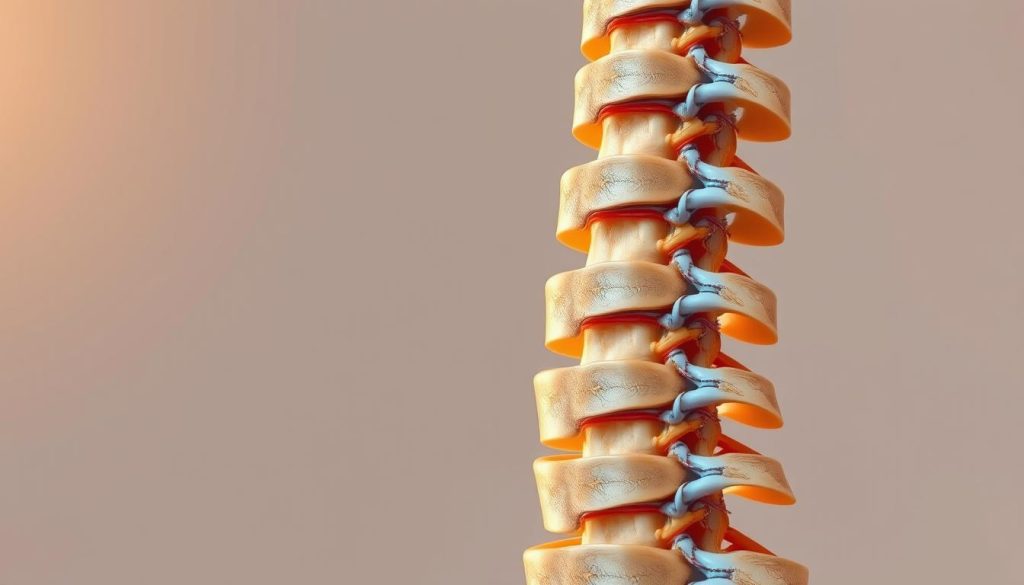Are you seeking effective pain relief without relying on medication or surgery? Manual therapy is a specialized hands-on approach used by physical therapists and other healthcare professionals to treat pain and mobility issues. This technique involves the skilled application of treatment methods to manipulate soft tissue, joints, and nerves, promoting natural healing and improving range of motion.
By enhancing the body’s natural healing processes, manual therapy provides relief from both acute and chronic pain conditions. This personalized treatment approach can be tailored to individual patient needs and specific conditions, making it an effective alternative for many patients.
Key Takeaways
- Manual therapy is a hands-on treatment method used to relieve pain and improve mobility.
- It involves the manipulation of soft tissue, joints, and nerves to promote natural healing.
- This technique is effective for both acute and chronic pain conditions.
- Manual therapy is a personalized approach tailored to individual patient needs.
- It is used by physical therapists and other healthcare professionals as an alternative to medication and surgery.
What Is Manual Therapy?
As a specialized form of physical therapy, manual therapy focuses on the skilled application of hands-on techniques to manipulate soft tissue, joints, and nerves. This approach is designed to reduce pain, improve function, and enhance overall well-being.
Definition and Core Principles
Manual therapy is defined by its core principles, which include restoring normal movement patterns and addressing the root causes of pain rather than just the symptoms. By focusing on the underlying issues, manual therapy provides a more sustainable solution for patients.
The practice is grounded in a deep understanding of human anatomy and the biomechanics of movement. Physical therapists use manual therapy as a primary modality to treat a variety of musculoskeletal conditions.
Types of Manual Therapy Techniques
There are several categories of manual therapy techniques, including joint mobilization/manipulation, soft tissue techniques, and neuromuscular techniques. Each type targets different body structures and addresses different types of dysfunction.
For instance, joint mobilization is used to improve joint mobility and reduce stiffness, while soft tissue techniques focus on relaxing tense muscles and improving circulation. Neuromuscular techniques, on the other hand, aim to restore normal movement patterns by addressing issues with nerve function.
By understanding the different types of manual therapy techniques, patients can better appreciate the benefits of this hands-on treatment approach. Whether it’s to alleviate pain, improve mobility, or enhance overall function, manual therapy offers a personalized solution tailored to the individual’s needs.
The Science Behind Manual Therapy
Manual therapy’s effectiveness is rooted in its ability to address both the physical and neurological aspects of pain. The science behind manual therapy reveals a complex interplay between biomechanical and neurophysiological effects.
Biomechanical Effects
Manual therapy techniques create measurable movement in targeted tissues, leading to changes in joint mobility and tissue extensibility. The mechanical stimulus provided by manual therapy can result in forces ranging from 200 to 800 N, causing approximately 6 mm of posterior to anterior translation of the vertebral segment. This biomechanical effect can help restore normal movement patterns and reduce stiffness in joints and muscles.

Neurophysiological Responses
Manual therapy influences the nervous system, affecting pain perception, muscle tone, and reflex activity. Research has shown that manual therapy can modify activity in cortical areas involved in pain processing, as demonstrated by functional imaging studies. Additionally, manual therapy can stimulate the body’s endogenous pain control systems, including the release of endorphins, leading to reduced pain and improved function.
By understanding the neurophysiological responses to manual therapy, practitioners can better tailor their techniques to address specific pain management needs.
Why Manual Therapy Is Effective for Pain Relief
The effectiveness of manual therapy in pain management is attributed to its ability to address both symptoms and underlying causes. Manual therapy encompasses a range of techniques that are designed to reduce pain, improve mobility, and enhance overall function.
Immediate Benefits for Pain Management
One of the significant advantages of manual therapy is the immediate relief it provides to patients. After a manual therapy session, patients often experience a reduction in pain intensity and an increase in comfort during movement. This immediate benefit is largely due to the therapy’s ability to reduce muscle tension, improve circulation, and decrease inflammation, all of which contribute to effective pain management.
Manual therapy achieves these immediate benefits through various mechanisms. For instance, by applying specific manual therapy techniques, therapists can help restore normal joint range of motion and reduce stiffness, making it easier for patients to move without experiencing significant pain.
Long-Term Effects on Mobility and Function
Beyond the immediate relief, manual therapy also offers long-term benefits that significantly impact a patient’s quality of life. Regular manual therapy sessions can lead to sustained improvements in mobility and function, enabling patients to perform daily activities with greater ease and return to their normal lives more quickly.
The long-term effects of manual therapy are partly due to its ability to break the pain-spasm-pain cycle that often perpetuates chronic pain conditions. By addressing both the symptoms and the underlying causes of pain, manual therapy creates a positive feedback loop that enhances overall recovery. As pain decreases and function improves, patients are able to engage more effectively in rehabilitation exercises, further accelerating their recovery.
Research evidence supports the effectiveness of manual therapy for various pain conditions, highlighting its value as a comprehensive treatment approach. By combining manual therapy with appropriate exercise progression, patients can experience a more rapid return to their normal activities, underscoring the therapy’s role in both pain relief and functional improvement.
Common Conditions Treated With Manual Therapy
The application of manual therapy extends to multiple health conditions, offering a non-invasive treatment option. Manual therapy, a hands-on treatment approach, is widely used to address various musculoskeletal and nervous system disorders.
Musculoskeletal Pain Disorders
Musculoskeletal pain disorders are among the most common conditions treated with manual therapy. These include back pain, neck pain, and shoulder pain, often resulting from poor posture, overuse, or injury. Manual therapy techniques, such as joint mobilization and soft tissue massage, can help alleviate pain and restore normal movement.
For instance, manual therapy can be very effective in treating shoulder pain by using manual joint and soft tissue techniques to restore full range of motion. Similarly, it can address back pain and neck pain by targeting the specific areas of tension and stiffness.
Post-Injury and Post-Surgery Rehabilitation
Manual therapy also plays a crucial role in post-injury and post-surgery rehabilitation. After an injury or surgery, muscle imbalances, tension, and weakness can develop, leading to reduced function and chronic pain. Manual therapy helps restore normal movement patterns, promoting recovery and preventing long-term issues.
For example, after joint replacement surgery, manual therapy can aid in regaining joint mobility and strength. It can also be used to treat scar tissue and adhesions that may form after surgery, improving overall recovery outcomes.
By addressing the underlying causes of pain and dysfunction, manual therapy provides a valuable treatment option for a wide range of conditions, enhancing overall well-being and quality of life.
How Manual Therapy Techniques Are Applied
The application of manual therapy techniques is a nuanced process that requires a deep understanding of the human body. Manual therapy is a hands-on treatment approach that involves the application of specific techniques to promote healing and relaxation. A skilled therapist will assess your condition and apply the most appropriate techniques to achieve pain relief and improved function.
Joint Mobilization and Manipulation
Joint mobilization and manipulation are techniques used to improve joint mobility and reduce pain. Joint mobilization involves the application of targeted forces to the joint to improve its range of motion. This can be done using various grades of movement, from gentle oscillations to more sustained stretches. Manipulation, on the other hand, involves a high-velocity, low-amplitude thrust to improve joint mobility.
The therapist will select the appropriate technique based on the specific joint restriction and the patient’s needs. For example, a patient with a stiff spine may benefit from manipulation to improve mobility, while a patient with a painful shoulder may require gentler mobilization techniques.
Soft Tissue Techniques
Soft tissue techniques are used to address muscle and connective tissue dysfunctions. These techniques include myofascial release, trigger point therapy, and strain-counterstrain approaches. Myofascial release involves the application of sustained pressure to the affected tissue to promote relaxation and reduce pain.
Trigger point therapy targets specific areas of muscle tension, using pressure to release the tension and reduce pain. Strain-counterstrain techniques involve positioning the body in a way that reduces tension on the affected muscle or tendon.
Neuromuscular Techniques
Neuromuscular techniques, such as proprioceptive neuromuscular facilitation (PNF) and muscle energy techniques, combine muscle contraction with stretching to improve muscle function and reduce pain. PNF involves the use of resistance to facilitate muscle contraction, while muscle energy techniques involve the use of gentle stretching to lengthen the muscle.
These techniques are often used in combination with joint mobilization and soft tissue techniques to provide a comprehensive treatment approach. The therapist will monitor your response to treatment and modify the techniques as needed to achieve the best results.
Manual Therapy vs. Other Treatment Approaches
As a hands-on treatment, manual therapy is frequently juxtaposed with chiropractic care and massage therapy in the realm of pain management. While these treatments share some similarities, there are distinct differences in their application, goals, and outcomes.
Comparing Manual Therapy and Chiropractic Care
Both physical therapists and chiropractors undergo extensive education and must be licensed to practice. However, their approaches and focuses differ. Manual therapy, performed by a physical therapist, aims to restore pain-free movement and function. In contrast, chiropractic care often emphasizes spinal alignment and treats underlying medical conditions through spinal adjustments.

Differences Between Manual Therapy and Massage
Manual therapy and massage therapy, while both hands-on, have different objectives. Massage therapy typically focuses on relaxation and alleviating general muscle tension. In contrast, manual therapy targets specific dysfunctions with therapeutic intent, aiming to improve mobility and reduce pain. The training and assessment processes for these therapies also vary, with physical therapists undergoing more extensive education in movement science and pathology.
Understanding these differences is crucial for determining the most appropriate treatment for your specific condition. By considering the unique benefits and focuses of manual therapy, chiropractic care, and massage therapy, you can make an informed decision about your care.
How to Prepare for Your Manual Therapy Session
To get the most out of your manual therapy session, it’s essential to be prepared. This includes understanding what to wear, how to prepare your body, and what to expect during the treatment.
What to Expect During Treatment
During your initial manual therapy evaluation, your therapist will assess your condition, discussing your symptoms and medical history. They will then develop a personalized treatment plan, which may include various techniques such as soft tissue techniques, joint mobilization, and neuromuscular techniques.
You should expect your therapist to explain each technique and adjust it according to your comfort level. If you experience any pain or discomfort, it’s crucial to communicate this to your therapist so they can make necessary adjustments.
Maximizing the Benefits of Your Sessions
To maximize the benefits of your manual therapy sessions, follow any home exercise programs recommended by your therapist. Additionally, applying self-care techniques such as relaxation and stretching can enhance your treatment outcomes.
It’s also important to track your progress, noting improvements in pain levels, range of motion, and functional abilities. This will help you and your therapist adjust the treatment plan as needed.
Integrating Manual Therapy Into Your Pain Management Plan
Manual therapy stands out as a highly effective approach for addressing various pain conditions. Throughout this article, we’ve explored the definition, types, and benefits of manual therapy, highlighting its role in reducing pain and improving function. By combining manual therapy with other interventions such as therapeutic exercise and education, you can experience optimal outcomes.
To determine if manual therapy is working for you, track improvements in pain levels, range of motion, and functional abilities. It’s essential to work with qualified physical therapists who specialize in manual therapy techniques. MOTION RX is a physical therapy company with expertise in manual therapy and a commitment to personalized care.
By integrating the latest evidence with hands-on expertise, MOTION RX’s approach to manual therapy can help you achieve optimal pain relief and improved function. Contact MOTION RX today to schedule a consultation and take the next step toward a pain-free life.



